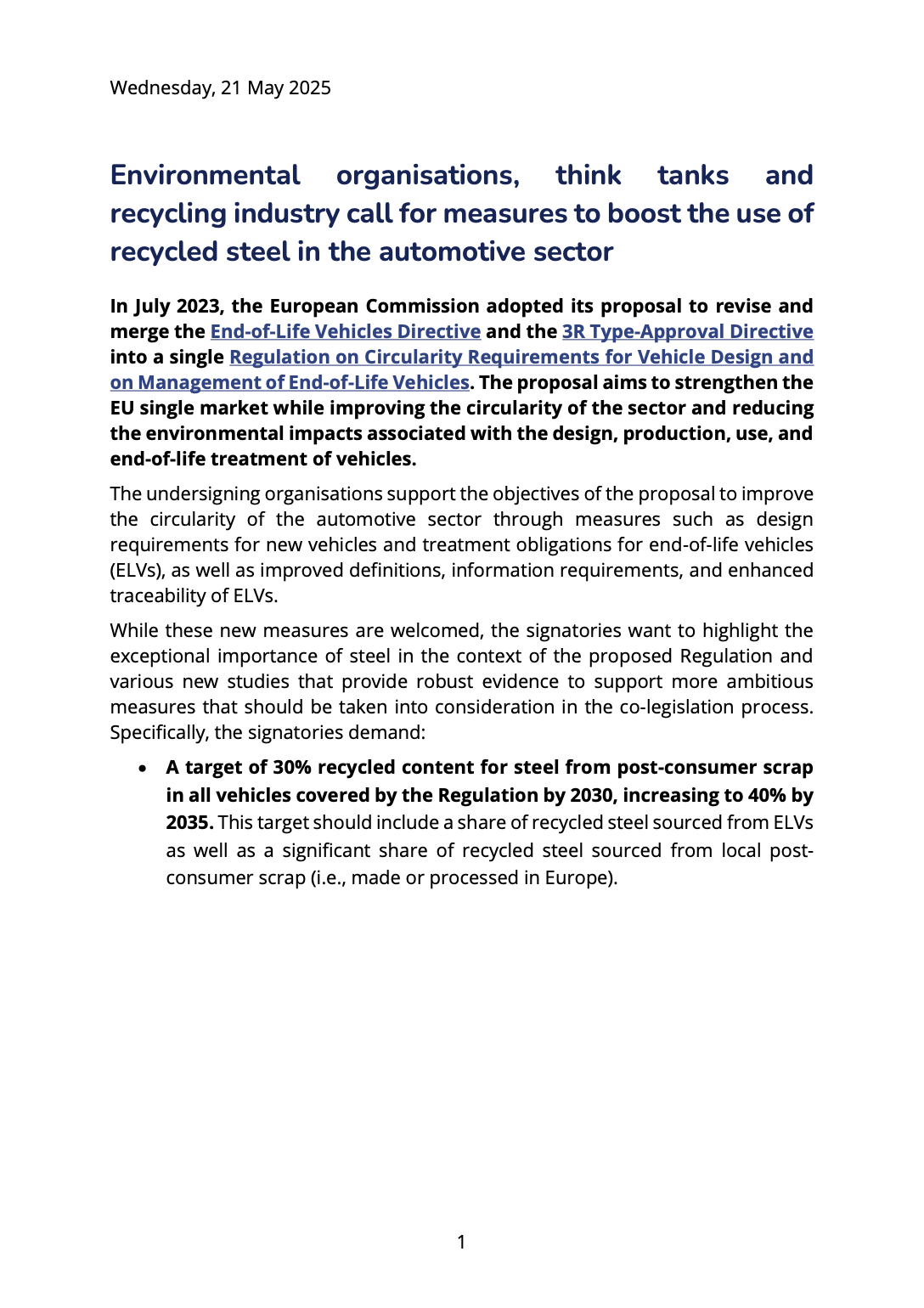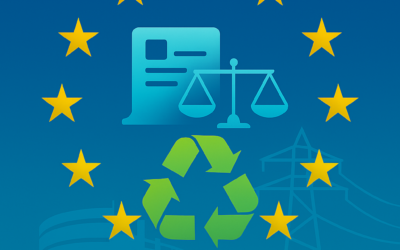Environmental organisations, think tanks and recycling industry call for measures to boost the use of recycled steel in the automotive sector

Sandbag co-signed a joint statement alongside leading environmental NGOs, think tanks, and recycling industry groups urging the EU to introduce binding targets for recycled steel scrap content in vehicles under the proposed Regulation on Circularity Requirements for Vehicle Design and on Management of End-of-Life Vehicles.
The statement highlights the underuse of recycled steel scrap in car manufacturing, despite its significant climate and resource benefits. Steel makes up 16% to 30% of cars’ embedded emissions from the production phase, yet only 6% of steel from end-of-life vehicles (ELVs) is reused for production of new vehicles. Clear targets would ensure that this regulation delivers on its potential to reduce industrial emissions and increases the circularity of the automotive sector.
The signatories call for minimum targets of 30% recycled content by 2030, rising to 40% by 2035, with a focus on steel sourced from ELVs and post-consumer scrap processed in Europe. These measures would reduce emissions, reduce reliance on raw materials like coking coal and iron ore, and keep valuable secondary materials within the EU economy.
Photo by nashvilledino2 from Canva
May 2025
Read More:
Steel labelling: Beyond the sliding scale
As EU policymakers debate how to certify low-carbon steel, Sandbag’s new briefing analyses the “sliding scale” method — and outlines why it may hinder rather than help decarbonisation. A new model is proposed based on product-specific benchmarks, multi-tier ratings, and circularity incentives.
Scrap Steel at Sea: How ship recycling can help decarbonise European steel production
As Europe seeks to decarbonise its steel industry, a new Sandbag report highlights an overlooked solution: high-quality scrap steel from retired ships. With up to 15 million tonnes of certified scrap available annually, ship recycling could meet 20% of EU steel scrap demand — if policy gaps are addressed.
Sandbag’s feedback to the call for evidence on the Circular Economy Act
Sandbag’s submission to the European Commission’s Circular Economy Act Call for Evidence highlights the importance of improving steel scrap quality, setting minimum recycled content requirements, and aligning carbon incentives to enhance circularity across the EU industrial sector.



